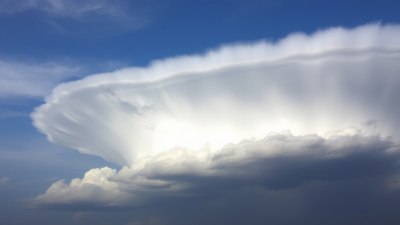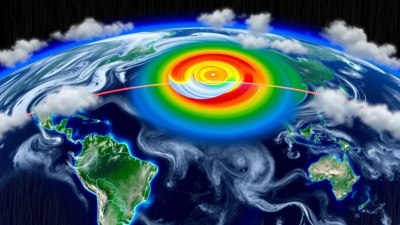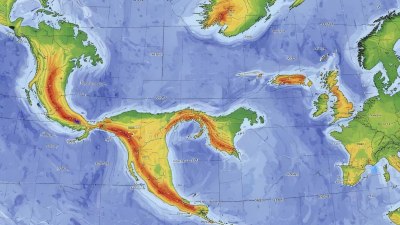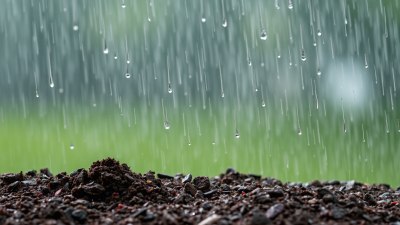The Unexpected Role of Weather in Our Happiest Memories
Explore how weather shapes our happiest memories and emotional experiences in unexpected ways.

Weather influences our daily lives in countless visible ways, from deciding what clothes to wear to shaping outdoor activities. Yet, beyond these practical effects, weather often holds a subtler and more profound role: it acts as a backdrop in the theater of our happiest memories. From sunlit afternoons to rainy evenings, the weather conditions during our joyful moments can deepen their emotional impact and shape how those memories endure. Understanding this interplay between weather and memory offers insight into human emotion, cognition, and how we perceive happiness itself.
The question arises: why does weather, a seemingly external and impersonal force, have such a significant influence on the memories we hold dear? Scientific studies in psychology suggest that environmental factors, including weather, interact closely with our brain’s emotional centers, modulating mood and the strength of memories. The link between mood and weather is well documented, with sunshine often elevating mood and cloudiness linked to more subdued feelings. These mood shifts, in turn, affect how memories are encoded and recalled.
One compelling example is the ubiquitous association of sunshine with happiness. Many people report that their most joyful moments occurred on bright, sunny days. The warmth of the sun and the brightness of the environment seem to amplify feelings of safety and optimism, creating a positive emotional climate that fosters happy experiences. Events like weddings, beach outings, and festivals often benefit enormously from sunny conditions, making the weather itself part of the happy memory. The very image of sunshine can instantly evoke feelings of joy, hope, and vitality.
Moreover, the sensory aspects of weather during happy experiences can become intertwined with memory, enhancing vividness and detail. For instance, the sensation of a gentle breeze during a romantic walk in the park or the fresh scent of rain during a playful afternoon can linger in the mind, enriching the memory’s texture. Sensory cues like these are fundamental in autobiographical memory, helping individuals recreate the experience vividly even years later. Thus, weather not only frames the moment but imprints physical sensations that heighten emotional recall.
Interestingly, it's not only sunshine that holds this power. Rain, often associated with melancholy, can also feature prominently in positive memories. A rain-soaked picnic, an impromptu dance in the rain, or cozy conversations during a storm often make the memory more intimate and meaningful. The contrast between the weather and the positive emotional state intensifies the uniqueness of the experience, making it stand out in memory. Rain has a way of creating a private, enclosed atmosphere, turning an ordinary day into something special.
Seasonal variations further influence the emotional tone of memories. For many, the freshness of spring symbolizes rebirth and new beginnings, aligning with memories involving hope and growth. Summer’s long, warm days lend themselves to freedom and adventure, often recorded as hallmark moments of youth and exploration. Autumn’s crisp air and colorful foliage evoke nostalgia and reflection, frequently populating memories tied to family gatherings or personal milestones. Even winter, with its cold and sometimes stark environment, can hold treasured memories of holidays, quiet moments by the fire, or the wonder of snowfall.
From a neurobiological perspective, the environment during an event affects neurochemical activity that influences how strongly the memory is encoded. Positive weather conditions can increase serotonin levels, which boost mood and enhance memory formation. Alternatively, adverse weather might increase stress hormones like cortisol, which could either enhance memory for particularly emotional moments or suppress it if overwhelming. This physiological dimension underscores how weather conditions interact with internal psychological states to shape the durability and emotional quality of memories.
Research also reveals that people often recall weather details vividly when reflecting on emotional experiences, especially positive ones. This suggests that weather acts as an organizing schema in the memory, providing a contextual framework that helps the brain retrieve complex emotional episodes. For example, recalling a childhood birthday might come with recollections of the warm breeze, the bright sun, or the rustling leaves, all helping to anchor the event in time and place. Weather thereby contributes as a cognitive scaffold in autobiographical memory.
The social context of weather further enriches its role in happy memories. Many joyous occasions involve groups of people coming together outdoors—weddings, sporting events, picnics, or family reunions—where favorable weather facilitates social bonding. The feeling of communal joy under a clear sky or during a cool evening breeze reinforces connections and adds layers of meaning to the memory. Social psychologists note that positive weather enhances social interaction quality, making happy memories not just about the event itself but also about the environmental conditions that permitted its success.
Moreover, cultural perceptions of weather shape how it features in memories. In some cultures, heavy rain is seen as a blessing and a source of joy, linked to fertility and renewal. In others, snow represents purity and celebration. These culturally mediated meanings influence how individuals encode and interpret weather during events, thereby impacting the nature of their happy memories. For example, a snowy day may evoke warmth and happiness in Nordic countries despite its physical coldness, contrasting with how the same weather might be considered gloomy elsewhere.
Personal experiences and individual differences also modulate the weather-memory connection. Some people have strong preferences or aversions to specific weather patterns, often shaped by past experiences. Someone who associates rainy days with childhood comfort may form positive memories around such conditions, while another person might feel discomfort, coloring their memories differently. Personality traits like optimism, sensory sensitivity, and nostalgia intensity also influence how people perceive and remember weather during important moments.
Technological advances enable deeper exploration of this relationship. Modern wearable devices and smartphones can track weather data alongside mood and activity logs, providing empirical data to analyze correlations between weather, emotional states, and memory formation. Virtual reality experiments recreate weather conditions to study their impact on emotional memory recall. These innovations enhance understanding not just theoretically but with practical applications in mental health, urban planning, and recreation design.
The concept of “weather nostalgia” has emerged, describing the yearning for past weather conditions tied to positive memories. People often report missing the particular feel of seasons or weather moments associated with significant life events. This form of nostalgia shows how weather contributes uniquely to identity and emotional well-being. It reminds us that our relationship with nature is deeply emotional and integral to our sense of self.
Weather’s role in story-telling and art further reflects its emotional resonance. Literary and visual arts frequently use weather metaphorically to evoke or accentuate emotions. Sunny skies often symbolize hope or joy, storms represent turmoil or passion, and calm rain reflects renewal. These artistic choices mirror and reinforce the psychological reality that weather powerfully shapes emotional memory. Through art, society collectively expresses and processes the complex feelings weather evokes.
In educational contexts, awareness of weather’s influence on mood and memory can enhance learning environments. For instance, daylight exposure and pleasant temperatures are linked to better concentration and mood, facilitating improved academic performance and retention. Structuring outdoor activities during favorable weather may deepen positive experiences and long-term memory consolidation in students. Such insights inform the design of educational programs and public spaces.
Urban planning increasingly recognizes the importance of weather and natural elements in fostering well-being and community happiness. Designing parks, green spaces, and walkways that maximize access to sunlight, shade, and fresh air supports positive emotional states and memory experiences. Weather considerations influence the scheduling of public events to optimize social bonding and community pride. These strategies demonstrate practical applications of the weather-memory connection for societal benefit.
Psychological therapies sometimes incorporate weather awareness to enhance treatment outcomes. For example, structuring outdoor therapy sessions during pleasant weather can boost mood and openness, facilitating emotional breakthroughs and positive memory formation. Understanding a patient’s weather associations may guide therapeutic interventions, acknowledging how weather-linked memories influence present emotional states. This nuanced approach highlights weather’s subtle yet powerful role in mental health.
Travel behavior also demonstrates how people seek specific weather conditions to create and relive happy memories. Destinations with favorable climate patterns attract visitors desiring relaxation and joy, reinforcing the significance of weather in personal satisfaction and memory creation. Tourists often describe their trip memories with vivid weather details, showcasing how climate and environment shape experiential quality. This phenomenon impacts tourism marketing and destination management.
Environmental changes and climate variability add complexity to the interplay of weather and happiness memory. Changing weather patterns may disrupt traditional positive associations or introduce new experiences. Extreme weather events can create traumatic memories but may also become part of shared community history and resilience stories. The dynamic nature of climate invites continuous reassessment of how weather influences emotional experiences and memory in contemporary society.
In relationships, weather conditions during shared experiences influence connection strength and memory vividness. Couples often cherish memories of romantic sunsets or snowy nights, with these conditions serving as emotional signposts. Friendships and family bonds are similarly enriched by collective weather experiences during joyful events. Weather thus acts as a silent participant in relationship narratives, shaping how people remember and tell their stories.
The interplay between weather and happy memories is a testament to the holistic integration of humans with their environment. It transcends mere sensory input to affect mood, cognition, social interaction, and cultural meaning. By appreciating this complexity, individuals can become more mindful of how external conditions shape internal states and memories, potentially harnessing weather to enhance well-being and happiness. Whether basking in golden sunlight or delighting in gentle rain, our happiest memories are often inseparable from the skies above them.
Ultimately, weather serves as a powerful and often unexpected anchor in the fabric of our happiest memories. It deepens emotional resonance, enriches sensory detail, and provides cultural context for the moments that define joy and fulfillment. Recognizing and embracing this connection offers a richer understanding of human experience, inviting us to cherish the interplay between nature’s moods and our own.











